The Ultimate California Road Trip For Wine Lovers
I lived in California and loved taking road trips, especially to the wineries up and down the coast. Outside of Italy, this is my favorite wine region! Did you know California is home to more than 100 grape varietals grown across more than 100 American Viticultural Areas (AVAs)? From sun-soaked Southern California vineyards to the iconic valleys of Napa and Sonoma, California is a wine lover’s paradise. While Napa might be the best-known name in American wine, limiting your tasting trip to just one region means missing out on a rich diversity of climates, terroirs, and flavors.
This ultimate road trip takes you from the coastal fog of Temecula to the rolling hills of Paso Robles and into the lush valleys of Sonoma and Napa. Whether you’re a wine newbie or a seasoned sommelier, this journey offers plenty to sip, savor, and swoon over.

First, here’s a little lesson on the wine regions of California. The state’s regions span a remarkable diversity of climates and landscapes, from the sun‑baked hills of Temecula in Southern California to the fog‑kissed valleys of Sonoma and cool coastal slopes of Santa Barbara; from the Danish charm of Solvang in the Santa Ynez Valley to the rustic heartiness of Paso Robles; and from the storybook charm of Carmel‑by‑the‑Sea on the Monterey Peninsula to the fertile soils of Lodi’s old‑vine Zinfandels. Farther north, Napa Valley reigns as the state’s most famous appellation, celebrated for world‑class Cabernets and opulent Chardonnay, while its neighbor Sonoma County offers a more laid‑back experience with equally outstanding Pinots, Chardonnays, and a wealth of boutique producers. Each region’s unique combination of sun exposure, fog patterns, elevation, and soil types gives California its reputation for producing nearly every grape variety under the sun, inviting wine lovers to embark on endless journeys of discovery. Now, I’ll take you to some of my favorite wineries!
First things first, rent a car in San Diego – I recommend a convertible! Check rates here.

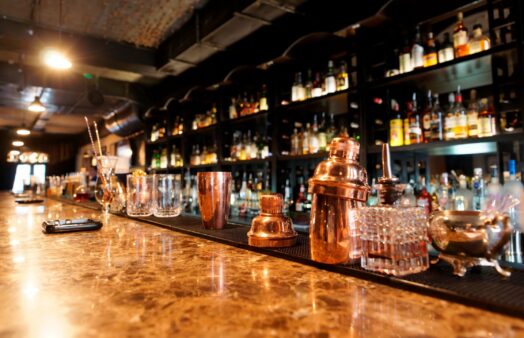

Days 1–2: Sip Under the Southern California Sun in Temecula
Often overshadowed by its northern neighbors, Temecula is Southern California’s hidden gem. Thanks to cool ocean breezes that drift inland and sun-drenched afternoons, this region produces stellar Rhône and Italian varietals. Temecula’s rolling vineyards and warm, sun-drenched days belie its Southern California location, tucked just north of San Diego. The region’s roots go back to the late 18th century, but it has burst into modern winemaking over the last few decades, finding its sweet spot with Rhône and Italian varietals. Morning fog drifting in from the coast gives way to bright afternoons, and you’ll find wineries offering everything from intimate tasting rooms with courtyard views to grand estates with sweeping vineyard vistas. Beyond the wine, there’s a charming Old Town district where you can sample local olive oils, browse artisan shops or grab a farm‑to‑table lunch before heading back to sip award‑winning Syrahs and Viogniers.
EAT, SIP, & STAY
The Goat and Vine is a cozy kitchen where stone-baked pizzas are the star. Try the roasted garlic chicken pizza.
PUBlic House in Old Town Temecula serves inventive gastropub fare—perfect for a late lunch with a glass of Viognier.
Leoness Cellars is perched atop rolling vineyards and offers award-winning Rhône and Bordeaux varietals like Syrah, White Merlot, and Cinsault Port in an elegant tasting room with vineyard views. The property’s elegant patio and modern barrel room provide a picturesque backdrop for wine flights and gourmet small plates.
Wilson Creek Winery is renowned for its Almond Champagne, a sweet sparkling wine that’s become a signature crowd-pleaser. The estate features a sprawling Mediterranean-style tasting room and hosts seasonal events like live music and grape-stomping festivals.
South Coast Winery Resort & Spa is an oasis surrounded by 63 acres of vineyards. Sip wine on your private patio or unwind at the full-service spa after a day of tastings.
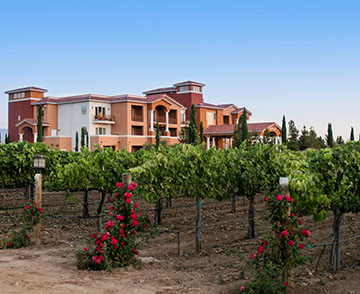
Days 3–5: Central Coast – Santa Ynez Valley, Santa Maria, and Paso Robles
Hop onto the scenic US-101 and head north along the Central Coast—home to the film-famous wine towns from Sideways and some of the state’s most approachable Pinot Noirs and Chardonnays.
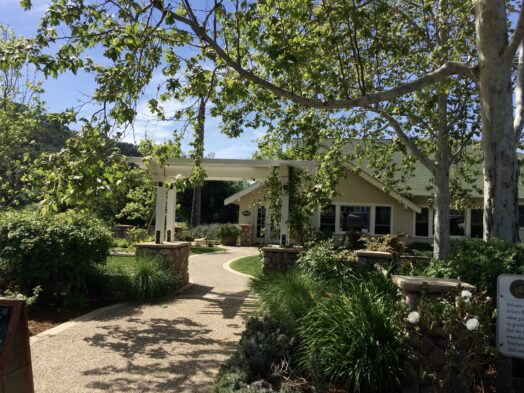
Stop 1: Santa Barbara
No vineyards here, but the Funk Zone is a hip district filled with tasting rooms, cafes, and wine bars just steps from the ocean. Santa Barbara’s wine country is defined by its proximity to the Pacific—cool coastal air and morning fog linger just long enough to lend layers of complexity to the region’s famously elegant Pinot Noirs and Chardonnays. Stretching from the vineyards of Santa Maria in the north down through the Santa Ynez Valley, the area is peppered with boutique producers and larger estates alike. Visitors drift between sleek, modern tasting rooms and rustic farmsteads, often pairing a day in the vineyards with fresh seafood in the city’s Funk Zone before returning to sunset views over the ocean.
Stop 2: Solvang & Santa Ynez Valley
Solvang is a Danish‑flavored village set amid the vines of the Santa Ynez Valley, its half‑timbered storefronts and windmills feeling plucked from another continent even as grapes ripen nearby. Though small in stature, the town punches well above its weight for wine, with tasting rooms tucked into bakeries, bakeries doubling as wine bars, and more than one family‑run estate offering intimate pours of crisp Sauvignon Blanc and creamy Chardonnay. The true allure comes when you climb into the open countryside beyond the village, where quiet back roads lead to hidden tasting nooks and postcard‑perfect rolling hills.
EAT, SIP, & STAY
Grab a paper tray of warm, doughy aebleskivers at Aebleskiver Café and stroll through town.
Lucas & Lewellen is known for award-winning Chardonnays and Pinots and one of the most inviting tasting rooms in the valley.
Perched on a hill above Solvang, Rusack Vineyards produces Rhône and Bordeaux-style blends that reflect the area’s maritime influence. Their tasting pavilion features panoramic views of the Danish village and surrounding vineyards, perfect for leisurely pours.
Solvang Inn & Cottages offers Danish-inspired rooms, suites, and secluded cottages—perfect for relaxing with a bottle under the stars.

Stop 3: Santa Maria Valley
I’m going to have to pause here because the Santa Maria Valley is one of my favorite regions for the food (nothing like Santa Maria barbecue!) and the wine!
Santa Maria Valley: Where Wine and BBQ Reign Supreme
The Santa Maria Valley, just north of Santa Barbara, is known for two things – beef and wine – such a delicious combination. And I recently spent a few days there to find the best of the best of each.
First, I’ll tell you that this one of the most spectacular solo drives through California. Driving the 101 north through the Santa Lucia Mountains is simply stunning. My trip took a bit longer than planned because I kept stopping to take pictures of the amazing landscape.
I’m a Texas girl so I was surprised to find that many consider Santa Maria Valley to be the barbecue capital of the West. When I think about what makes the California coast iconic, I think about wine. And surfing. Or drinking wine while watching surfers. But I never thought of the region for beef, or barbecue. Turns out, Santa Maria style barbecue is quite a secret and only those who dare to explore this region will discover it.
The history of Santa Maria style barbecue
Tri-tip steaks are the cornerstone of Santa Maria style barbecue. The tri-tip is bottom sirloin, cut into a triangular shape. Not surprisingly, it was cowboys of the mid 1800s who actually came up with this culinary creation. They’d sit around the campfire and hang their cuts of beef over the open flame. The meat is unseasoned and the native red oak is what flavors the beef. Today, many restaurants feature open pit grills – or Santa Maria grills, where guests can watch the process. And just as the cowboys did, the dish is served with pinquito beans and salsa. Rumor has it that President Ronald Reagan, who owned land in the area, would bring seasoned Santa Maria style barbecue chefs to the White House.
With a cooler climate and distinctive transverse mountain ranges, this AVA produces bold, balanced wines.
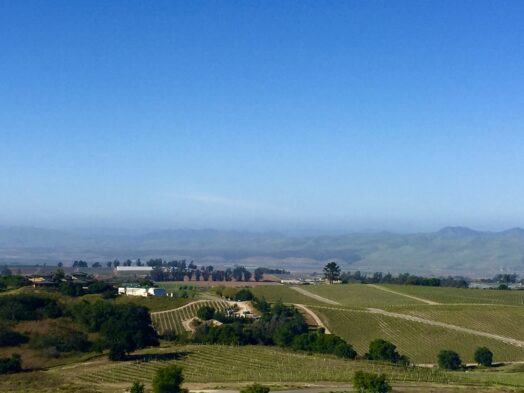
EAT, SIP, & STAY
Far Western Tavern is a legendary stop for Santa Maria-style BBQ. Try the tri-tip with local pinquito beans.
Riverbench Vineyard crafts elegant Pinot Noirs and sparklers.
Presqu’ile Winery blends modern design with standout wines and panoramic vineyard views.
Stop 4: Paso Robles
Paso Robles turns out some of my favorite California wines. The town sits inland enough to benefit from hot days and cool nights, a diurnal shift that helps its dark, robust Zinfandels and Rhône‑style blends develop concentrated flavor while retaining balance. Once known for sprawling, mass‑production vineyards, Paso has reinvented itself as a hub for boutique and experimental winemakers, many of whom are crafting limited‑release single‑vineyard lots. Tasting rooms range from rustic barn‑style settings to sleek, minimalist galleries, all framed by oak‑studded hills and a laid‑back, small‑town ranching vibe.
EAT, SIP, & STAY
Four Sisters Ranch Vineyards & Winery offers tastings on a hilltop patio with sweeping valley views and small-lot reds you won’t find anywhere else.
Pioneers of Mediterranean varieties in California, Tablas Creek Vineyard imports its own vine cuttings from France to craft estate-grown Grenache, Mourvèdre, and Syrah. The biodynamic estate’s shaded patio and garden areas set the scene for guided tastings and educational tours.
Days 6–7: Coastal Charm in Carmel-by-the-Sea
Trade vines for ocean views and head to the storybook village of Carmel-by-the-Sea. With a Wine Walk Passport, you can explore more than a dozen tasting rooms by foot. Carmel‑by‑the‑Sea is on the Monterey Peninsula where world‑class wines meet ocean breezes and fairytale cottages. The village’s wine walk invites you to drift through galleries, boutiques, and cafés, with more than a dozen tasting rooms cozying up to cobblestone lanes. As you sip cool‑climate Pinot Noirs and Chardonnays, sea mist drifts in from Carmel Bay, reminding you that this is as much a seaside escape as a wine destination. After tasting, wander to the beach or sample Mediterranean‑inspired fare at one of the town’s many gourmet bistros.
EAT, SIP, & STAY
Dametra Café offers hearty Mediterranean fare with an unexpected side of live mandolin music and spontaneous singing.
Use your Wine Walk passport to taste a variety of regional wines at stops like Wrath, Scheid Vineyards, and Caraccioli Cellars.
Hofsas House Hotel offers Old World charm, ocean views, and easy access to wine tasting, boutique shopping, and Carmel Beach.
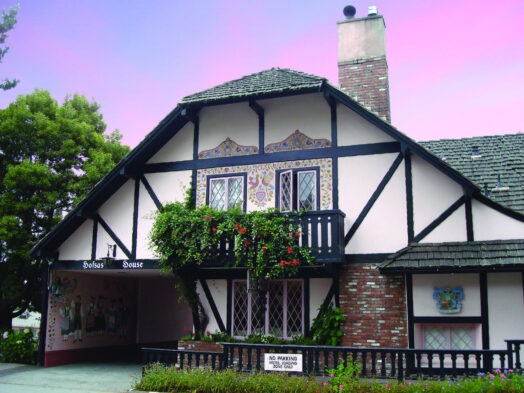
Days 8–10: Northern California Icons – Lodi, Sonoma, and Napa
Your final stretch explores California’s best-known wine destinations.
Lodi
Often overlooked, Lodi has a rich viticultural history and is especially known for its robust Zinfandels. Lodi lies in California’s Central Valley but feels entirely its own, anchored by some of the oldest Zinfandel vines in the state. The region is celebrating a renaissance among young winemakers who are rediscovering these heritage vines and reimagining Lodi’s place on the wine map. Away from the valley’s almond orchards and irrigated fields, the Mokelumne River and its sandy soils lend brightness and structure to the wines here. Tasting rooms are warm and unpretentious, and you’ll often find yourself sharing stories with winemakers eager to showcase their small‑lot blends and crisp, varietal whites.
EAT, SIP, & STAY
Klinker Brick Winery produces some of California’s most celebrated Old Vine Zinfandels.
Michael David Winery is famed for its edgy, innovative labels like the “Porto” Port-style wine and the bold Earthquake red blend. Its modern tasting room and spacious lawn area host live music and food pairings that reflect the region’s agricultural roots.
Sonoma
Sonoma County spans a tapestry of microclimates—from fog‑cooled Russian River Valley to sun‑soaked Dry Creek—and embodies California’s farm‑to‑table ethos in both its vineyards and kitchens. Ancient redwoods frame winding roads that lead to family‑owned estates, while charming towns like Healdsburg and Sonoma Plaza invite a slower pace. Here you’ll discover unoaked Chardonnays that sing of bright orchard fruit, Pinot Noirs that balance earth and berry, and old‑vine Zinfandels that pack a punch. Small‑batch producers rub shoulders with legendary names, making Sonoma a place to linger, sip, and explore.
EAT, SIP, & STAY
Spoonbar in Healdsburg showcases fresh produce in beautifully plated California cuisine.
Wilson Artisan Wineries offers a tasting passport to several boutique wineries like Mazzocco and Soda Rock. If you stay at The Grape Leaf Inn, many tastings are complimentary.
Jordan Vineyard & Winery exudes elegance with its French-inspired château, refined Cabernet Sauvignon, and graceful Chardonnay. Guests explore manicured gardens and the estate’s private lake before settling into a seated tasting in the stately barrel room.
Arista Winery focuses on single-vineyard Pinot Noirs and Chardonnays from the Russian River Valley, emphasizing expressiveness and balance. The tasting room’s wraparound deck and firepit offer a relaxed setting for sipping estate wines under towering redwoods.
The Grape Leaf Inn blends Victorian charm with modern comfort and features a wrap-around porch ideal for evening sipping. I spent a couple fo days at this charming inn!
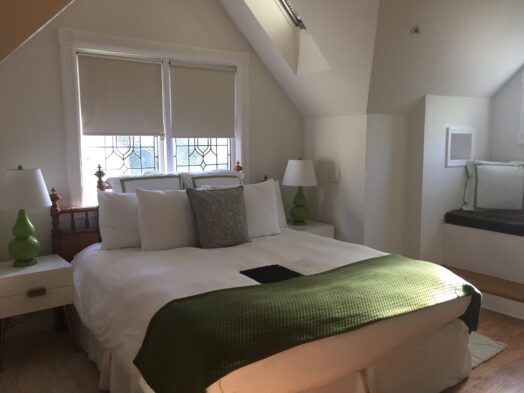
Napa
Finish your tour with a splash of luxury. In Napa Valley, rolling vineyard‑draped hills give way to a concentration of prestigious wineries that put California on the global wine map. The northern reaches around Calistoga and St. Helena are known for bold, tannic Cabernets that reward aging, while the southern tiers near Napa and Yountville showcase lush, expressive Chardonnays and elegant Pinot Noirs. Michelin‑starred restaurants and luxury resorts frame the tasting room experience, and visitors often curate days around estates like Chateau Montelena, Opus One, and Domaine Chandon. Yet tucked between the icons you’ll still find family‑run inns and unheralded gems crafting innovative blends and small‑batch special releases.
EAT, SIP, & STAY
Score a reservation at The French Laundry in Yountville—if you can. It’s a three-Michelin-starred experience not to be missed.
Beaulieu Vineyard (BV) offers historic wines that helped put Napa on the global wine map.
Chimney Rock is my absolute most favorite Napa wine! It’s the place to go for iconic Napa Valley Cabernets.
Silverado Resort and Spa is a luxe wine country retreat with golf, tennis, pools, and spa services—all minutes from some of the valley’s best wineries.

Booking the best wine tastings in California
Most wineries offer basic walk‑in flights starting around twenty to thirty dollars per person, which typically includes a flight of three to five wines poured in a casual tasting room setting. For those seeking something more immersive—such as guided vineyard tours, seated tastings of reserve or library wines, or food pairings—you can expect fees ranging from fifty to one hundred fifty dollars per person (often waived with a bottle purchase). At the high end, ultra‑exclusive experiences—think private barrel‑room sessions, winemaker dinners, or helicopter vineyard visits—start around two hundred dollars and can climb well beyond five hundred, depending on the level of personalization and luxury. Booking ahead online is strongly recommended, especially on weekends and during harvest season, as many popular estates limit daily reservations and require at least 24‑hour notice.
From surf to soil, California’s wine regions offer a road trip that’s as diverse as the varietals they produce. Whether you love coastal whites, earthy Pinot Noirs, or bold, sun-ripened reds, there’s a glass waiting for you. So buckle up, uncork something new, and toast your way through the Golden State.
This blog post may contain affiliate links, meaning that if you click on a link and make a purchase, I may receive a small commission at no extra cost to you. I only recommend products and services I truly believe in and use myself.

